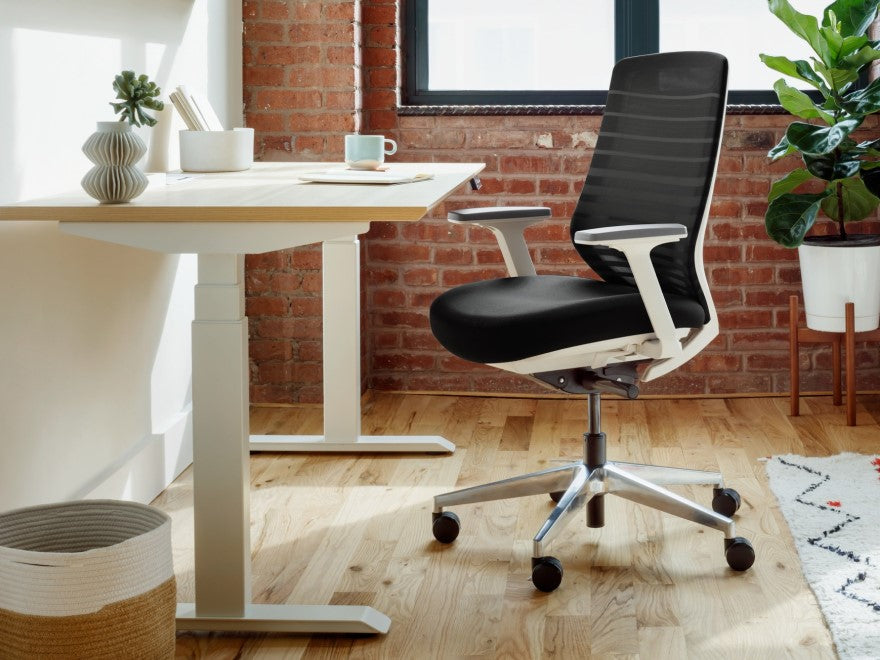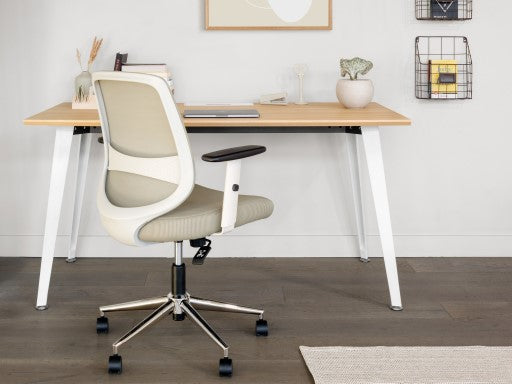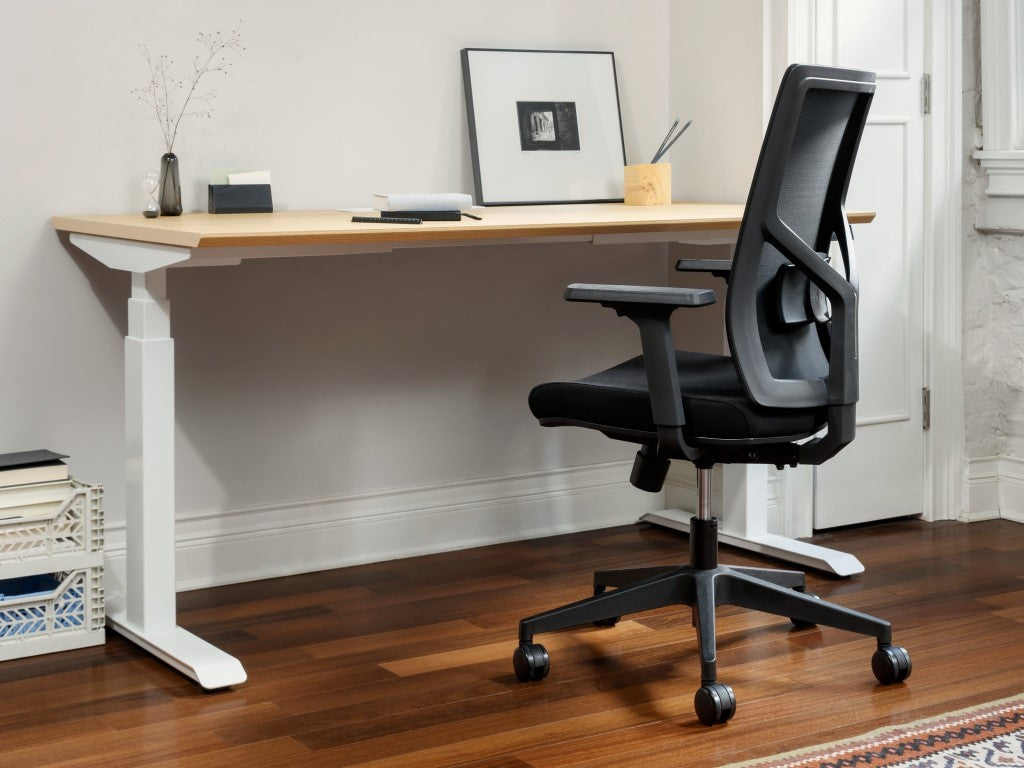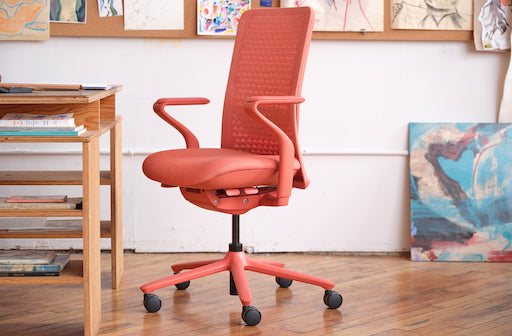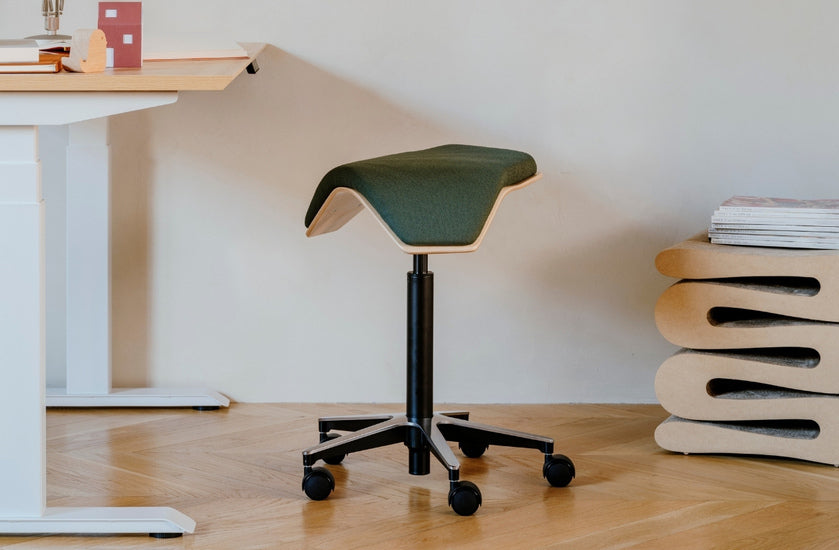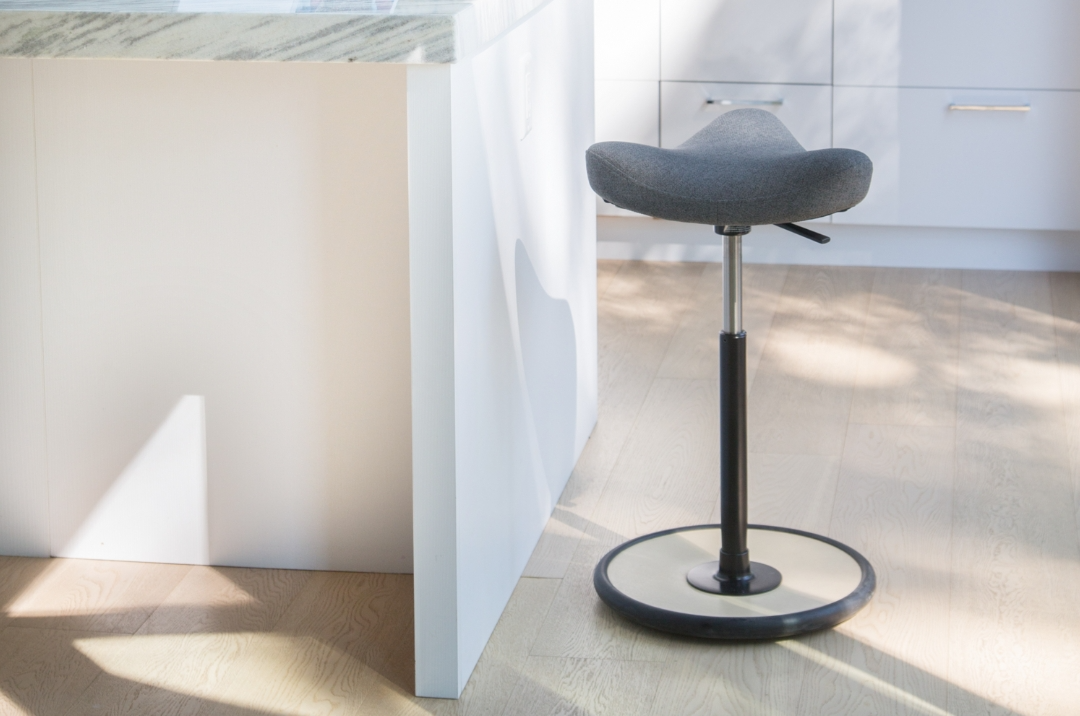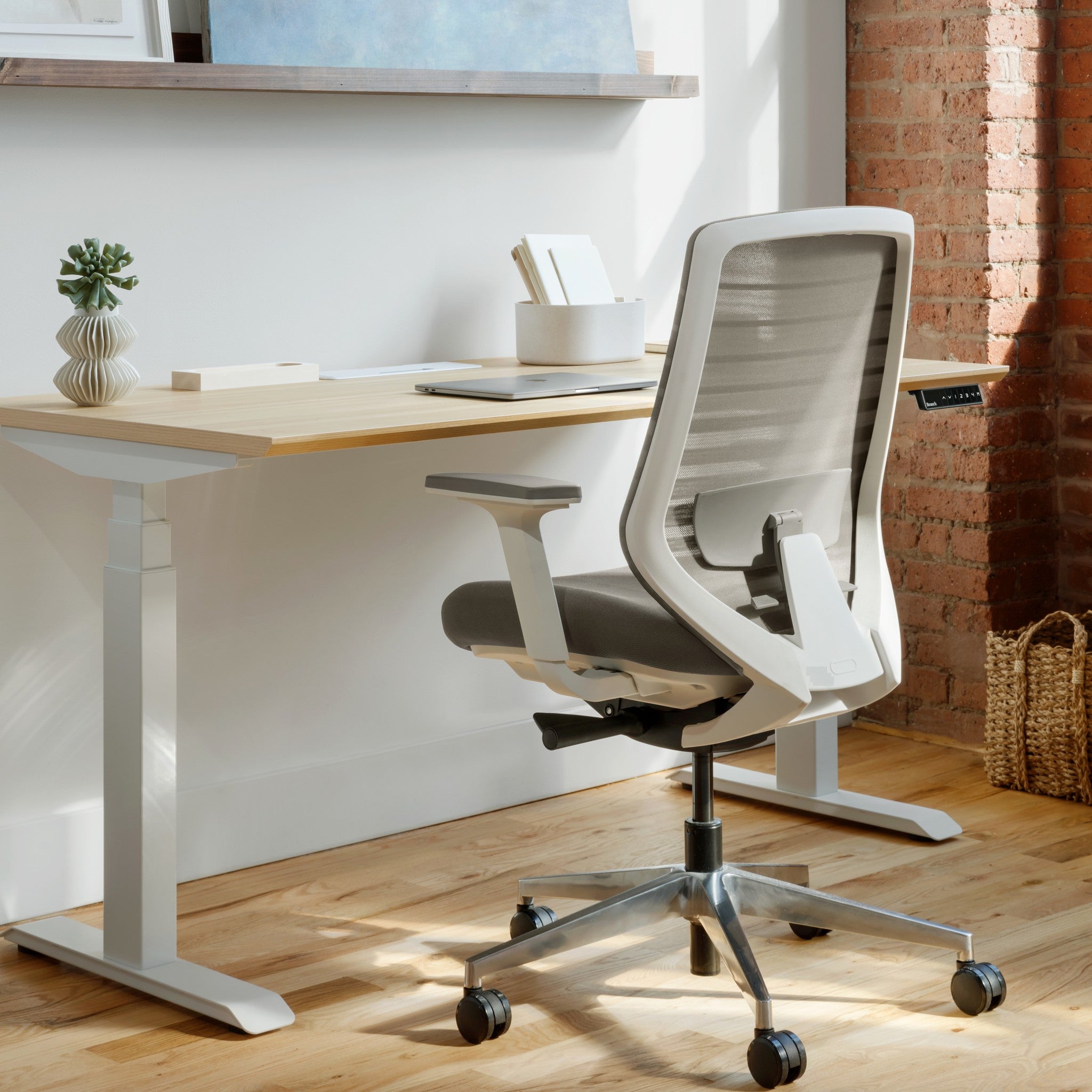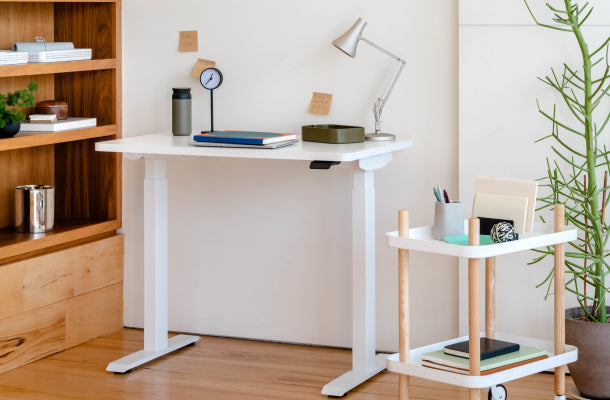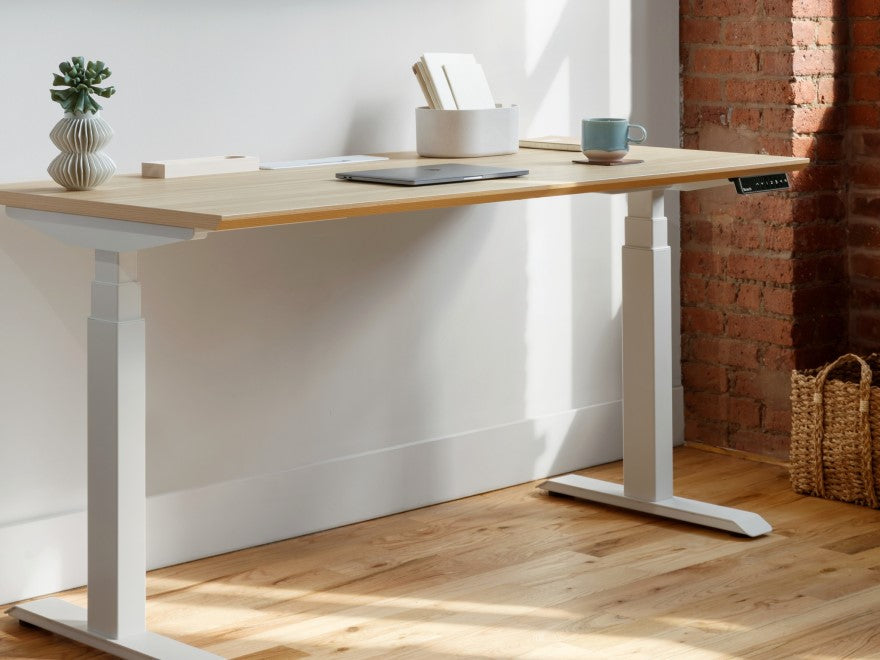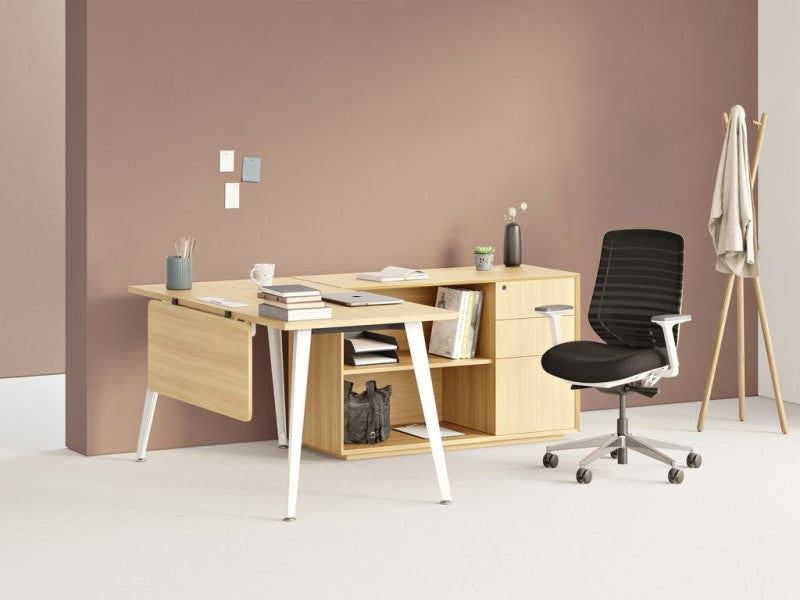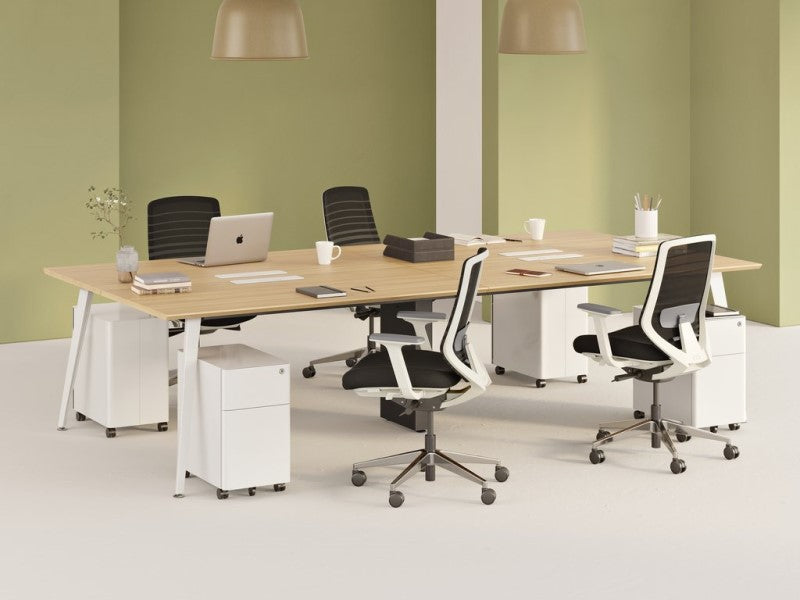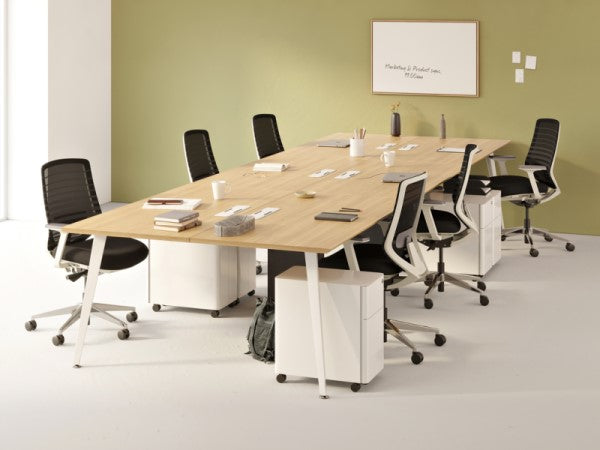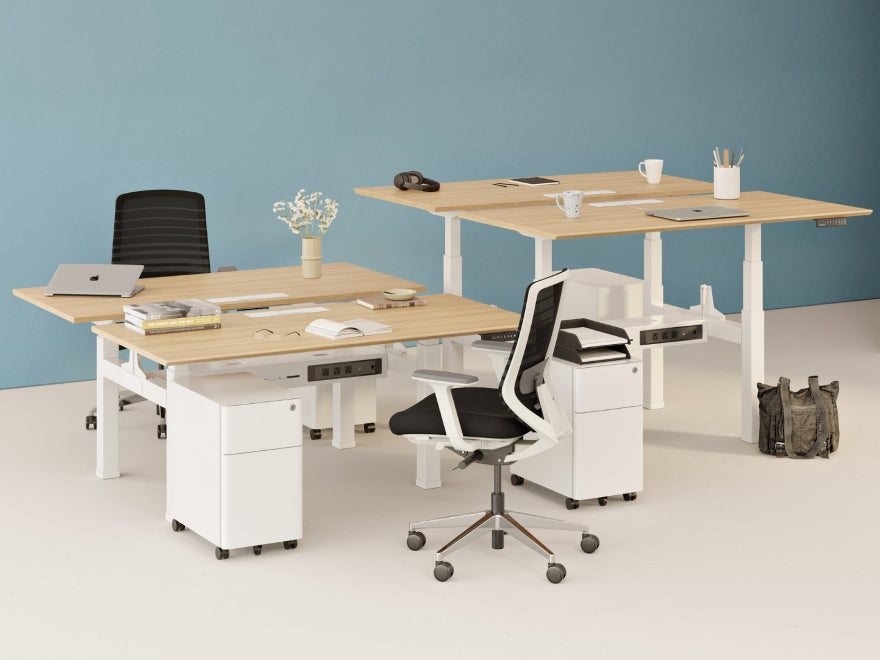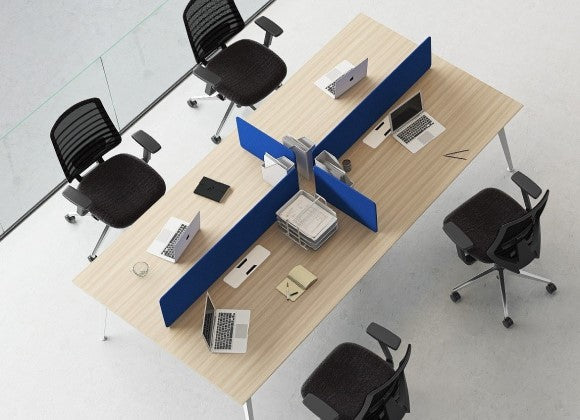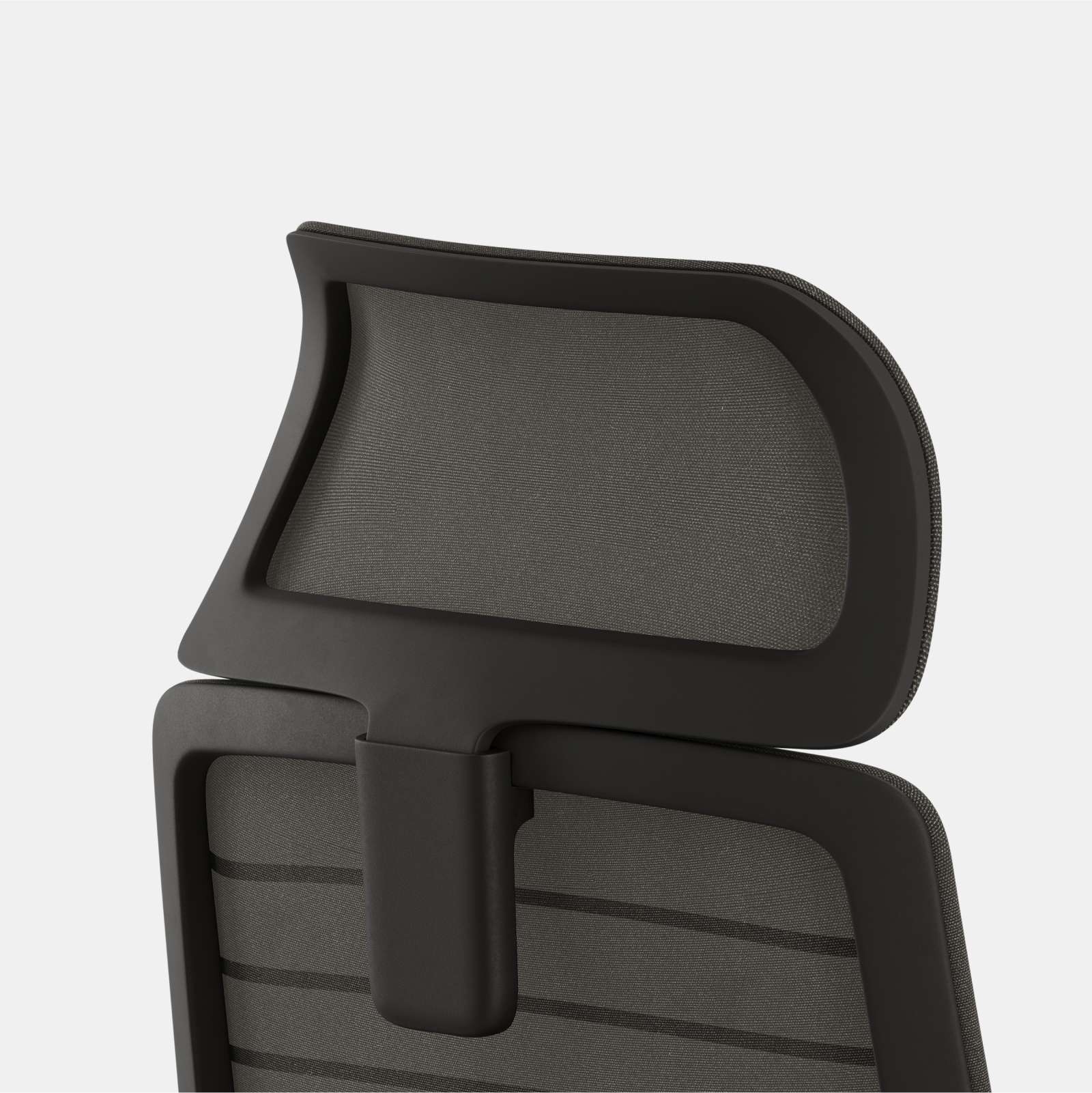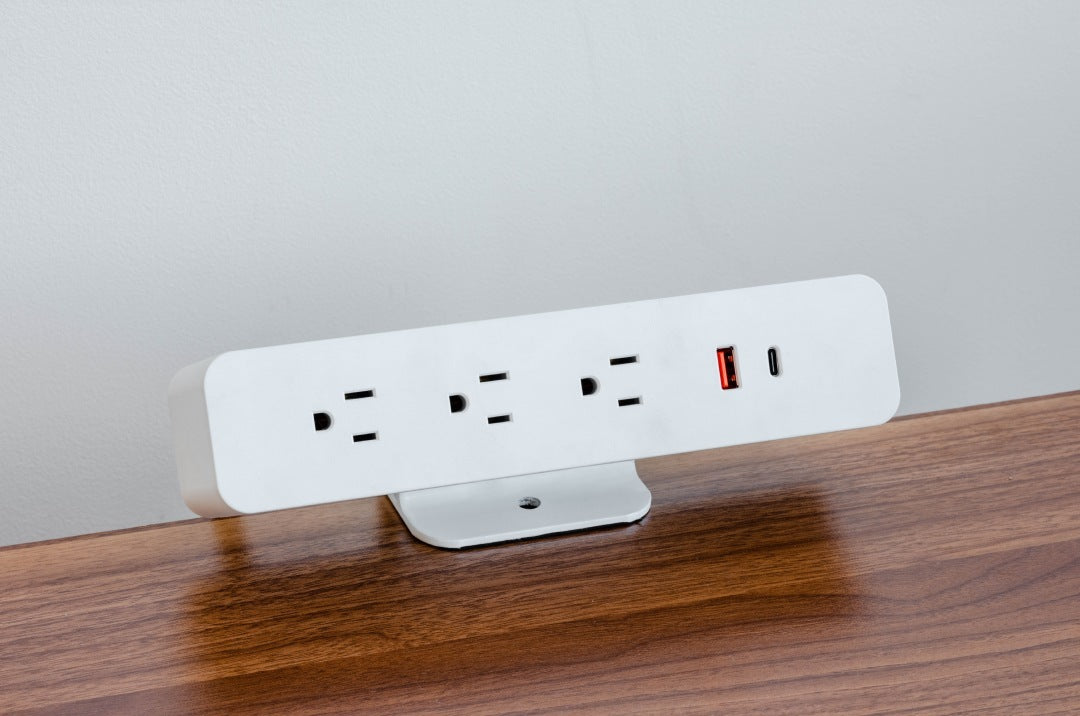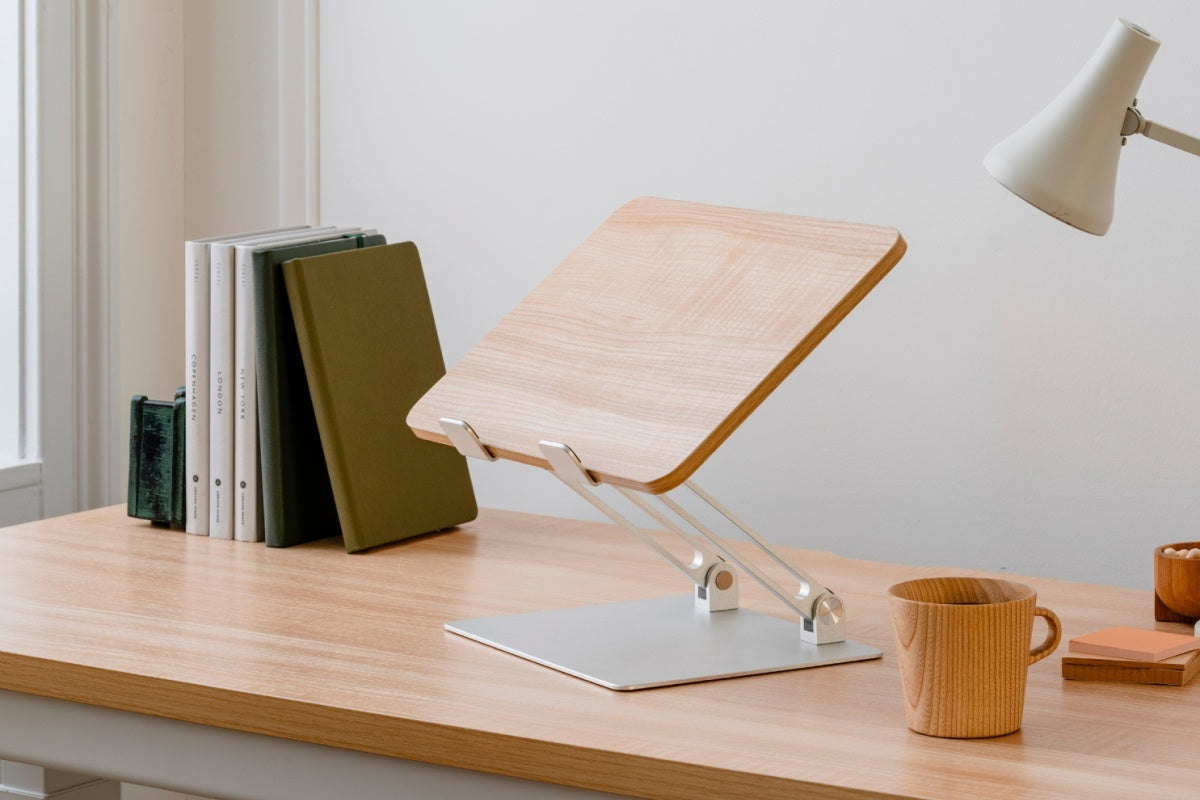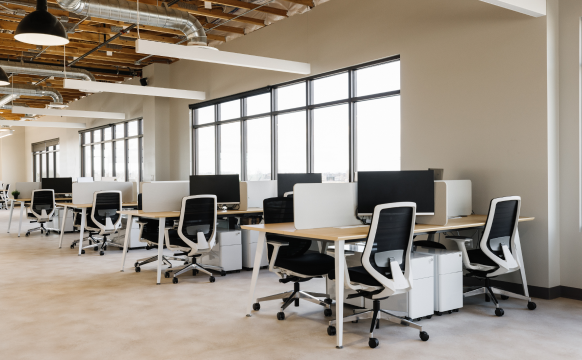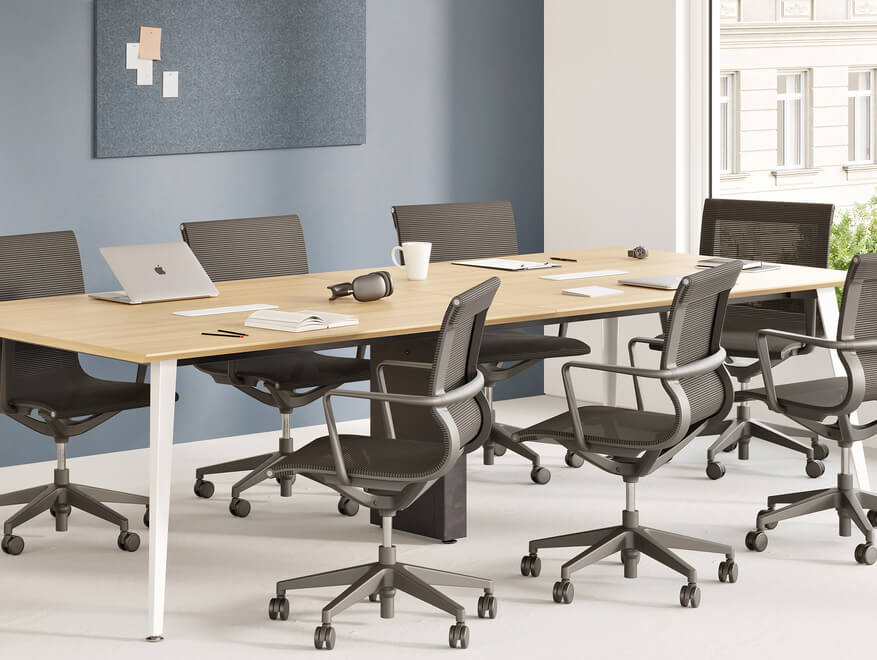Branch has compiled the ultimate guide on understanding ergonomics: What is it, why is it important, and how you can incorporate it into your daily routine.
Office ergonomics has been a trendy term for some time now, but the meaning can get muddled in all the ways it gets used. So what is ergonomics anyway? And why is it so important in the workplace?
The importance of ergonomics in the workplace is all about employee health and safety. More than that, though, a good ergonomics program might improve employee happiness and motivation while reducing stress and the risk of workplace injuries. Learning about ergonomics can help you prepare your business for increased productivity and satisfaction.
We’ve compiled everything you need to know to understand ergonomics in this guide. What is ergonomics, why is ergonomics important, and how can you incorporate ergonomics into your daily routine or workplace? Keep reading for answers.
What Is Ergonomics?
A clear understanding of ergonomics will help answer the question, "Why is ergonomics important in the workplace?"
Essentially, ergonomics is the science of work, based on the Greek words “ergon” (work) and “nomos” (laws). In practice, the field of ergonomics studies the way humans work and develops best practices to keep you efficient and productive.
The foundation of ergonomic principles is based on the philosophy of human-centered design, which means designing things that take people's needs, abilities, and limitations into account.
The three domains of ergonomics
As a scientific field, ergonomics can be narrowed down into three broad domains: physical, cognitive, and organizational ergonomics. We'll explore each one in more detail in this section.
1. Physical ergonomics
Physical ergonomics is an important area of focus for businesses working on better safety culture. It is concerned with how the human body responds to physical and physiological demands in the working environment.
Musculoskeletal disorders (MSDs) are among the most frequent causes of lost or reduced work time. In fact, MSD is responsible for a whopping 30% of worker’s compensation costs, and 20-60% of office workers suffer from MSD.
The most common musculoskeletal injuries and MSDs include:
- Carpal tunnel syndrome
- Epicondylitis (elbow)
- Muscle strains and low-back injuries
- Rotator cuff injuries (shoulder)
- Tendinitis
- Trigger finger
Other common symptoms associated with musculoskeletal injuries include lower-back pain and bad posture.
Most work-related MSDs are preventable with good workplace ergonomics. You can decrease risk factors by focusing on the causes of these MSDs. Risk factors often include repetitive movements and strain from vibration, repetition, force, and poor posture.
To address physical ergonomics in the workplace, you must manage your office environment as it relates to physical activity. For example, chairs, desks, headsets, and keyboard trays with an ergonomic design encourage good posture. Accessibility and proper training for material handling (e.g., good lifting techniques to prevent sprains and strains) are also crucial.
2. Cognitive ergonomics
Cognitive ergonomics is concerned with mental processes as they relate to performance quality. For example, memory, perception, reasoning, and motor response are all mental processes. And these processes often affect interactions among humans and other elements of a system or business.
In short, the mental processes involved with cognitive ergonomics impact the mind's ability to interact with data, complete job tasks, and process information. As a result, employee engagement, workday productivity, and even employee satisfaction can improve when you focus on cognitive ergonomics.
To address cognitive ergonomics, the programs and software that you or your employees interact with should be easy to use. Clear and simple user interfaces, programs, and internal systems are essential. The employee workspace should also be clear, simple, and easy to use.
3. Organizational ergonomics
Organizational ergonomics, also known as macroergonomics, is concerned with the design of work systems. This includes optimizing sociotechnical systems, including their organizational structures, policies, and processes.
Essentially, organizational ergonomics can improve entire workplaces. Businesses can enhance the performance and effectiveness of their systems by making them easier to use. In addition, you can improve organizational ergonomics by providing the methods and knowledge necessary to work within and improve existing work systems.
So, Why Is Ergonomics Important in the Workplace?
The value derived from implementing ergonomic practices in the workplace is clear. And the most accessible place for most businesses to begin is physical ergonomics. Poor ergonomics in the office, paired with repetitive motions, long periods of time spent sitting, and awkward postures, won’t lead anywhere good.
Beyond creating a more comfortable work environment, studies have shown that companies that incorporate ergonomic solutions can decrease healthcare costs. That's right, by reducing the risk of injury for employees through a complete ergonomics process, your business can save money in the long term.
Additionally, proper ergonomic solutions can increase productivity, employee morale, satisfaction, and efficiency. And at the same time, you'll be reducing worker’s compensation costs, risk factors, turnover, and absenteeism.
How to Incorporate Ergonomic Solutions
So, you agree that proper ergonomics in the workplace are essential, but what now? As we noted earlier, physical ergonomics is often the best place to begin your ergonomics assessment. We've highlighted key elements below to get you started.
Ergonomic chairs
One of the easiest ways to incorporate ergonomic best practices in your office is using an ergonomically certified office chair. Besides being more comfortable than the standard office chair, they’re also healthier over the long term.
Ergonomic office chairs work by reducing stress and tension on your joints, muscles, ligaments, and nerves. They also help support a healthy posture and reduce back, shoulder, and neck pain.
Using an ergonomic chair reduces the likelihood of developing health issues such as lower back pain, strained muscles, or carpal tunnel syndrome. And with less pain, it’s easier to be more productive at work.
People come in all shapes and sizes, and one of the benefits of ergonomic chairs is that they’re highly customizable. Here are some of the features you should be looking for in ergonomic office chairs, with tips on how to adjust them accordingly from a certified ergonomist:
- Seat height: Adjust your office chair height so that your knees are bent at a 90-degree angle. For most people, this means that when you stand next to your chair, the top of the seat cushion is at the height of your kneecap.
- Seat depth: Your seat depth should allow for about two inches of space between the front edge of the seat and the back of your calf. While most people will be comfortable with the chair’s standard setting, taller employees with longer legs will find more comfort with a fully extended seat that has been pulled out. Employees with shorter legs will prefer to have their seat snug with the back of the chair.
- Armrest height: Aim for an armrest height that allows your elbows to bend at a 90-degree angle, and ensure that your armrests are set low enough that they fit underneath your desk. Sitting too far from your desk and computer screen promotes slouching.
- Armrest depth: Taller employees will find it helpful to extend the position of their armrests. On the other hand, shorter employees often find it more comfortable to keep the armrests in the shortest position.
- Lumbar support: The lumbar support mechanism should support the small of your back — meaning the area just above your tailbone.
- Back angle: Ergonomic chairs are built to provide you with the best working posture when the back of the chair is at a 90-degree angle. Working from a reclined position is not recommended.
In short, ergonomic office chairs should support your posture from every angle. With good back support and a range of adjustment points, quality chairs can help protect against workplace injuries.
Computer monitor
You probably spend most of your time working on a computer, so it’s vital to follow ergonomic guidelines when using one. Doing so can help prevent eye strain and decreases the risk of developing a musculoskeletal disorder from poor posture.
Here are some tips to follow when using your computer at work:
- Mount your monitor: If possible, mount your computer monitor about an arm’s length away from you. Ideally, the monitor arm allows height, depth, and rotation adjustability.
- Avoid tech neck: Position the monitor directly in front of you at arm’s distance to avoid protracting the neck to view your screen. In addition, the topmost portion of the screen should be just slightly below eye level to keep your neck in a neutral posture.
- Manage multiple screens: When using two or more monitors, align them based on the frequency of use. For example, if you split your attention 50:50 between screens, align them symmetrically. On the other hand, if the split is 80:20, place the screen that is used more often directly in front of you and place the second monitor directly adjacent for easy viewing.
- Combat eye strain: Align the monitor perpendicular to a light source when possible to reduce glare. Check your display settings, as most retina displays will automatically adjust screen brightness in response to the ambient light level in your environment.
A quality monitor setup can be life-changing for someone who spends long periods of time at their desk. If your eyes feel tired and dry at the end of the day or your head, neck, and shoulders ache, it could be time for a new monitor.
Bonus tip: To prevent eye strain, follow the “20/20/20 rule” — every 20 minutes, shut your eyes for a few seconds, then look 20 feet in the distance and hold your gaze for 20 seconds.
Standing desks
Swapping out your office desk for a standing desk might be a little more work than shifting to an ergonomic office chair, but if you can, it’s a worthwhile investment. And offering standing desks to employees is an excellent way to show that you care about workplace safety.
Research has found that the average American sits for 13 hours a day, which means that including sleeping for eight hours, we spend about 21 hours a day in a sedentary position. While the scientific community is still debating the potential harms of sitting that much, there are many benefits to standing.
Common benefits of standing more throughout the day include:
- Increased circulation and energy
- Improved productivity, mood, and heart health
- Decreased risk for cancer, cardiovascular disease, and early mortality
If you’re not able to use a standing desk, it’s still important to take breaks throughout the day — even if it’s just for a few minutes. If you do use a standing desk, here are some ergonomic tips to follow:
- Determine the correct height: Stand with your arms straight at your sides — the desk height should be level with the front of your elbows so that your forearms and wrists are in a neutral posture while working.
- Support for shoulders, arms, and wrists: Your shoulders should be relaxed with your arms directly at your sides and elbows comfortably flexed near a 90-degree angle. Your forearms should be parallel to the floor or sloping slightly downward with wrists in a neutral position and palms supported on a cushioned surface while using your keyboard.
- Support your joints: Use an anti-fatigue mat under your feet while standing at your desk to support your spine, hips, knees, ankles, and feet.
You'd be surprised at the difference in back pain and fatigue when you have the option to stand up for a while. And if you're worried about whether it will impact productivity, don't be. Working in a standing posture has no adverse effects on productivity.
Don’t Get Bent Out of Shape: Focus on Ergonomics
Implementing ergonomic best practices as you set up your office is an easy and practical investment. It will likely decrease the risk of facing musculoskeletal disorders later in life for you and any employees. In addition, you’ll be more productive at work when you’re more comfortable overall, which is yet another reason why ergonomics in the workplace is so valuable.
Besides the tips mentioned above, we recommend working with an ergonomist to develop a better sense of your posture and learn how to adapt the work environment to your specific stature to stay healthy. Additionally, rest break apps and posture sensors provide helpful reminders to check in with your body.
For those who'd like some help revamping their office for better ergonomics, check out our Design My Office feature! Design My Office has options for home office and corporate design, allowing the flexibility that today's workplaces demand.
On new furniture, exclusive sales and more.
My Office
Your cart is empty.

